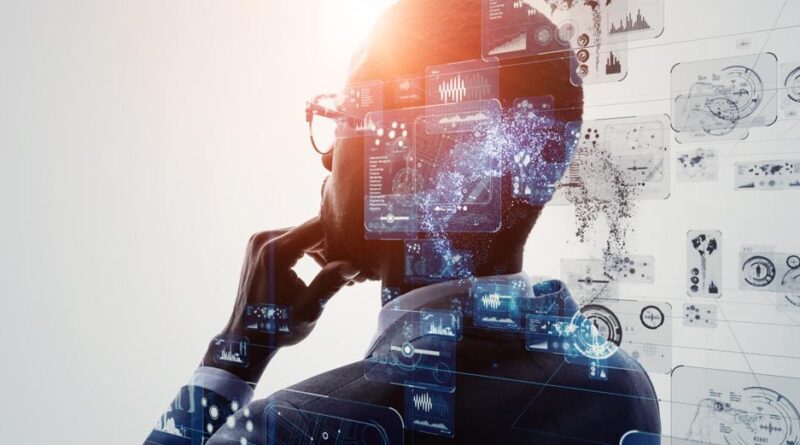What Impact Will AI Have on the Future of Work?
Artificial intelligence (AI) has already begun to reshape industries across the globe, but the future impact of AI on work is still unfolding. From automating routine tasks to enhancing decision-making, AI promises to revolutionize the way we work. But what does this mean for employees, employers, and the global workforce? In this article, we will explore the various ways AI is expected to influence the future of work, including its potential benefits, challenges, and the skills needed to adapt to this new landscape.
1. Understanding AI and Its Current Applications in the Workplace
Before we dive into the future implications, it’s important to understand what AI is and how it’s already being applied in workplaces today.
1.1 What is Artificial Intelligence?
AI refers to machines and software systems designed to simulate human intelligence. These systems can learn from data, adapt to new inputs, and perform tasks that traditionally required human intervention. In the workplace, AI technologies include:
- Machine Learning: Systems that can learn from and predict data trends.
- Natural Language Processing (NLP): AI that enables machines to understand and interact using human language.
- Robotic Process Automation (RPA): AI systems that automate repetitive tasks and workflows.
1.2 Current AI Applications in the Workplace
- Customer Service: AI chatbots handle customer inquiries 24/7.
- Data Analytics: AI analyzes large datasets to provide insights for decision-making.
- Automation: AI automates manual, repetitive tasks, such as data entry and invoicing, improving efficiency.
- Hiring and Recruitment: AI is used to analyze resumes, screen candidates, and even conduct initial interviews.
2. The Positive Impact of AI on the Future of Work
AI’s integration into the workplace promises many benefits for both employees and employers. Here are some of the key positive impacts:
2.1 Increased Efficiency and Productivity
One of the most significant impacts of AI is its ability to automate repetitive tasks, allowing employees to focus on higher-value work. With AI handling mundane tasks, workers can:
- Spend more time on creative and strategic initiatives.
- Increase their productivity by minimizing time spent on administrative tasks.
- Reduce human error in processes that require repetitive action.
2.2 Enhancing Decision-Making and Problem-Solving
AI’s data-processing capabilities can provide insights that humans might miss. By analyzing large sets of data quickly and accurately, AI systems can:
- Identify patterns and trends that inform better business decisions.
- Assist managers in making data-driven decisions, improving organizational outcomes.
- Support problem-solving by providing a range of solutions based on historical data and real-time analysis.
2.3 Creating New Job Roles
While some jobs may be replaced by AI, many new roles will emerge as well. AI will give rise to new career paths in fields such as:
- AI specialists: Experts who design, train, and implement AI solutions.
- AI ethics officers: Professionals who ensure AI technologies are developed and used ethically.
- Data analysts: Experts who interpret AI-driven insights for strategic decision-making.
- Automation engineers: Individuals who work to integrate and manage AI systems across industries.
These new roles will help ensure that workers can find employment even as certain tasks are automated.
3. Challenges and Risks of AI in the Workplace
Despite its many advantages, AI brings challenges and risks that must be addressed to ensure a fair and inclusive future of work.
3.1 Job Displacement and Automation
One of the most significant concerns about AI is its potential to displace workers. As machines take over repetitive, routine tasks, employees in specific sectors may face job insecurity, particularly in fields like:
- Manufacturing
- Retail
- Administrative support
This shift could lead to unemployment for workers who do not have the necessary skills to adapt to new roles.
3.2 Skill Gaps and Workforce Transformation
As AI continues to evolve, the demand for workers with skills in AI development, data analysis, and digital literacy will rise. However, many current workers lack these skills, creating a significant skill gap. To mitigate this, workers must:
- Upskill and reskill to adapt to changing job requirements.
- Engage in continuous learning to stay competitive in the workforce.
- Take part in training programs designed to teach AI-related skills.
3.3 Bias and Discrimination in AI Systems
AI systems are only as good as the data they are trained on. If the data used to train AI systems is biased or incomplete, it can result in biased outcomes. For example, AI algorithms used in hiring may favor candidates who fit historical patterns, potentially leading to discrimination.
It’s essential for companies to:
- Develop AI systems with transparent, unbiased data.
- Implement regular audits to ensure fairness in AI applications.
4. How AI Will Change Job Roles and Work Structures
AI will not only impact specific tasks but also change the structure of jobs and organizations.
4.1 More Collaboration Between Humans and AI
Rather than replacing human workers, AI will increasingly collaborate with employees to enhance their capabilities. For example, AI can assist in:
- Medical diagnosis: AI tools analyze patient data, while doctors use their expertise to make final decisions.
- Customer service: Chatbots handle routine inquiries, but human agents step in for complex issues.
- Creative industries: AI tools assist in tasks like graphic design, but human input remains crucial for creativity and vision.
This collaboration will redefine job roles and enable workers to focus on areas that require emotional intelligence, creativity, and complex problem-solving.
4.2 Remote Work and AI Tools
With the rise of remote work, AI tools will play a crucial role in supporting distributed teams. AI can assist in:
- Project management: AI-powered tools will help track progress, assign tasks, and provide real-time updates.
- Communication: AI-driven communication tools will help bridge gaps in time zones and language barriers.
- Collaboration: Virtual assistants powered by AI can streamline workflow, enabling teams to work together efficiently despite physical distance.
4.3 Flexible Work Arrangements
AI could help facilitate more flexible work arrangements by automating time-consuming administrative tasks. This flexibility could lead to a more personalized work-life balance, as workers will have more control over their schedules.
5. The Skills You’ll Need to Thrive in an AI-Driven Future
To succeed in an AI-powered workforce, workers must equip themselves with the skills necessary to work alongside and leverage AI technologies.
5.1 Technical Skills
To remain relevant, workers should develop technical skills such as:
- Data analysis and interpretation
- Machine learning and AI programming
- Automation tools and software
5.2 Soft Skills
AI may be able to handle technical tasks, but soft skills are still essential. Critical soft skills include:
- Creativity: AI can assist with tasks, but humans will always lead in creative problem-solving and innovation.
- Emotional Intelligence (EQ): AI cannot replicate the ability to empathize, manage relationships, or navigate complex human emotions.
- Adaptability: As technology evolves, the ability to learn new tools and approaches will be key to thriving in an AI-driven environment.
6. Preparing for the AI-Driven Future of Work
Organizations and employees alike must take proactive steps to prepare for AI’s influence on the workforce.
6.1 Investing in Employee Training
Companies should invest in training programs that equip employees with the skills they need to work with AI technologies. Offering reskilling opportunities will not only help employees adapt but also boost overall productivity.
6.2 Fostering a Culture of Lifelong Learning
The fast-paced evolution of AI will require workers to continuously learn and adapt. Employers should encourage a culture of lifelong learning, providing employees with the tools and resources to stay current with emerging technologies.
Conclusion
AI is poised to revolutionize the future of work, offering tremendous opportunities for growth, efficiency, and innovation. However, it also comes with challenges such as job displacement and the need for new skills. By embracing AI’s potential and preparing for its changes, both employees and employers can harness its power to create a more productive, dynamic, and inclusive workplace. As the workforce continues to evolve, those who are adaptable, skilled, and open to collaboration with AI will thrive in the new era of work.

